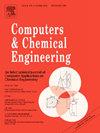Rapid design of combination antimicrobial therapy against Acinetobacter baumannii
IF 3.9
2区 工程技术
Q2 COMPUTER SCIENCE, INTERDISCIPLINARY APPLICATIONS
引用次数: 0
Abstract
Treatment of serious bacterial infections with antimicrobial agents, such as antibiotics, is a major clinical challenge, because of growing bacterial resistance to multiple agents. Combination therapy (i.e. combined dosing of more than one agent) is often used for the purpose, but its systematic design remains a challenge. To address this, we recently reported a method to mathematically model bacterial response to antimicrobial agents, and to use this model for systematic design of clinically relevant combination therapy. The method relies on (a) longitudinal data of bacterial load, estimated from optical density measurements during time-kill experiments in an automated instrument, and (b) use of these data to fit a mathematical model for combination therapy design. In this work, we studied an application of the proposed method to (a) an important bacterial pathogen (Acinetobacter baumannii) and (b) two cases of antibiotic combinations (ceftazidime / amikacin and ceftazidime / avibactam) in synchronous and asynchronous dosing, not otherwise studied to date. Following the proposed method, optical density based data of bacterial load under antibiotic exposure for 20 h were used to calibrate the mathematical model and subsequently predict outcomes of various dosing regimens with clinically relevant pharmacokinetics. Representative predictions by the mathematical model were tested in vitro in a hollow fiber infection model over 120 h. Test outcomes validated these predictions. Collectively, this study both provides guidance for design of A. baumannii infection treatments with the agents studied and underscores the broader applicability of the proposed method for design of clinically relevant combination therapy.
快速设计针对鲍曼不动杆菌的联合抗菌疗法
由于细菌对多种药物的耐药性不断增强,使用抗菌药物(如抗生素)治疗严重细菌感染是一项重大的临床挑战。为此,联合疗法(即一种以上药物的联合用药)经常被使用,但其系统性设计仍是一项挑战。为了解决这个问题,我们最近报告了一种方法,可以建立细菌对抗菌剂反应的数学模型,并利用该模型系统地设计与临床相关的联合疗法。该方法依赖于:(a)细菌负荷的纵向数据,这些数据是通过自动仪器在时间杀灭实验中的光密度测量估算得出的;(b)利用这些数据拟合出一个数学模型,用于联合疗法的设计。在这项工作中,我们研究了所提出的方法在以下方面的应用:(a) 一种重要的细菌病原体(鲍曼不动杆菌);(b) 两种抗生素组合(头孢他啶/阿米卡星和头孢他啶/阿维巴坦)的同步和异步给药,这是迄今为止尚未研究过的。根据所提出的方法,在抗生素暴露 20 小时的情况下,细菌负荷的光密度数据被用来校准数学模型,并随后预测与临床相关的药代动力学的各种给药方案的结果。数学模型的代表性预测结果在中空纤维感染模型中进行了 120 小时的体外测试。总之,这项研究既为使用所研究的药剂设计鲍曼不动杆菌感染治疗方案提供了指导,又强调了所提出的方法在设计临床相关联合疗法方面的广泛适用性。
本文章由计算机程序翻译,如有差异,请以英文原文为准。
求助全文
约1分钟内获得全文
求助全文
来源期刊

Computers & Chemical Engineering
工程技术-工程:化工
CiteScore
8.70
自引率
14.00%
发文量
374
审稿时长
70 days
期刊介绍:
Computers & Chemical Engineering is primarily a journal of record for new developments in the application of computing and systems technology to chemical engineering problems.
 求助内容:
求助内容: 应助结果提醒方式:
应助结果提醒方式:


